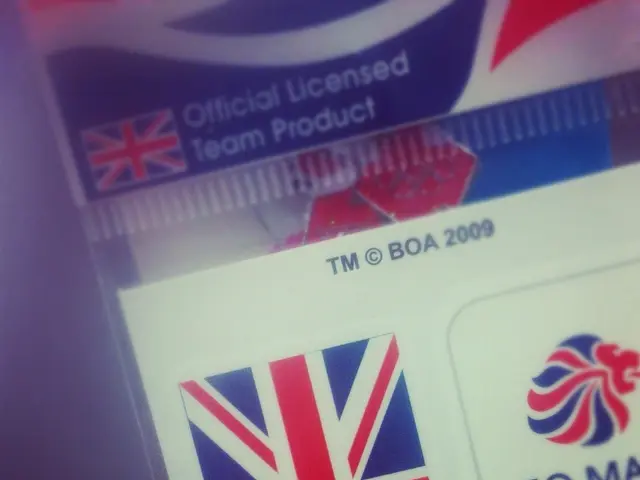The collection of apple genetic material: a repository of apple varieties
🍎 Apple Genetic Goldmine
Plant & Food Research in New Zealand keeps a treasure trove of apple genetics, known as a germplasm collection, right in their Hawke's Bay orchard. This diverse collection offers a host of future apple traits.
❓ What's in the apple germplasm collection?
The apple germplasm collection encompasses apples of all shapes, sizes, and colors, including red-fleshed varieties. These precious genetic resources are stored in a variety of ways: as seeds in cool storage, as whole plants in a nursery or orchard, or as cryopreserved dormant buds. At Plant & Food Research (PFR), it's all about trees in the orchard.
❓ Why plant trees?
Apples don't breed true, meaning that the seeds' genetic makeup will differ from that of the tree bearing the fruit. Growing the trees is the only way to truly know how the apples will look and taste.
🗜️ History of the apple germplasm collection
The New Zealand collection began in the 1950s, housing approximately 500 distinct cultivars, including heritage ones, crab apples, and cider apples. In the 1990s, PFR added a whopping 30,000 seeds from around the world, particularly Central Asia (especially Kazakhstan). To increase the collection's genetic diversity, PFR has also developed a breeding program.
💡 Wild Apples in Central Asia
Central Asia, particularly Kazakhstan, is where modern apples originated, with an abundance of wild apple forests teeming with apples of all shapes, sizes, and colors, including red-fleshed apples. These trees have been open-pollinated for generations, making them highly genetically diverse. They boast several desirable characteristics—disease resistance, mountainous terrain adaptation, and resistance to cold, dry climates.
🌱 A Source of New Traits and Genetic Diversity
Many trees in the collection possess specific traits that could enhance existing apple varieties. These can be used to breed new, better apples with those desirable traits. For example, red-fleshed apples, while not great eaters, can be crossed with existing white-fleshed cultivars to produce high-quality red-fleshed eating apples.
🔄 The Germplasm Collection in Apple Breeding
The germplasm collection serves as a base for apple breeding efforts, offering a wide range of genetic material. Breeding programs collect material from throughout the collection and other superior apples to create new cultivars.
🔒 A Safety Net for the Future
All apple trees of a given cultivar are clones and, therefore, equally susceptible to disease. Having a germplasm collection ensures genetic diversity to fall back on in the event of widespread disease, extreme climatic conditions, or other disasters. The collection forms part of a long-term strategy to manage economic risk and aid the development of new product types.
🌳 The Future of Cryopreservation
While PFR currently stores the collection as trees, the potential for cryopreservation may offer a supplementary form of storage for added safeguarding of the collection. Ideally, planting the collection at 2 different sites would further reduce the risk.
📚 Useful Links
- USA's national apple germplasm collection
- The call of the wild apple
💰 Financial Benefits
The apple germplasm collection plays a pivotal role in the apple industry by facilitating the development of new, improved apple varieties that enhance market competitiveness, yield, and quality. This can lead to economic benefits, as well as contribution to sustainable agriculture practices through reduced pesticide use and disease resistance.
🏛️ Conservation of Heritage Varieties
The collection also serves as a repository for heritage apple varieties, ensuring their preservation for future generations and contributing to the conservation of valuable genetic material that might otherwise be lost. This allows for generational exploration of the apples' unique characteristics and traits.
- The diverse apple germplasm collection stores seeds, whole plants, and cryopreserved dormant buds, creating a genetic goldmine for future apple traits.
- In the Hawke's Bay orchard, Plant & Food Research grows trees to understand the true characteristics of apples, as apples don't breed true from seeds.
- The New Zealand collection, started in the 1950s, initially housed around 500 cultivars, including heritage apples, crab apples, and cider apples.
- In the 1990s, Plant & Food Research added 30,000 seeds from various global locations, especially from Central Asia, increasing the collection's genetic diversity.
- Central Asia, particularly Kazakhstan, is home to an abundance of wild apple trees that boast desirable characteristics—disease resistance, mountainous terrain adaptation, and resistance to cold, dry climates.
- Many trees in the collection possess specific traits that could be used to breed new, improved apples with desirable qualities, such as red-fleshed apples.
- The apple germplasm collection serves as the foundation for breeding programs, providing a wide range of genetic material to create new cultivars.
- In the event of widespread disease, extreme climatic conditions, or other disasters, the germplasm collection ensures genetic diversity as a safety net for the future.
- The collection forms part of a long-term strategy to manage economic risk and aid the development of new product types, contributing to sustainable agriculture practices.
- Cryopreservation has the potential to offer a supplementary form of storage for added safeguarding of the collection, reducing risks further when combined with planting the collection at two different sites.
- The apple germplasm collection plays a crucial role in the apple industry, facilitating the development of new, improved apple varieties that enhance market competitiveness, yield, and quality.
- These improved apple varieties can lead to economic benefits and contribute to sustainable agriculture practices by reducing pesticide use and promoting disease resistance.
- The collection also serves as a repository for heritage apple varieties, preserving them for future generations and contributing to the conservation of valuable genetic material.
- Exploration of heritage apple varieties' unique characteristics and traits allows for a generational understanding of these time-tested apples.
- The use of the apple germplasm collection extends beyond horticulture into environmental science, sponsoring research on wild apple forests' role in flora and fauna diversity, carbon sequestration, and soil health.








